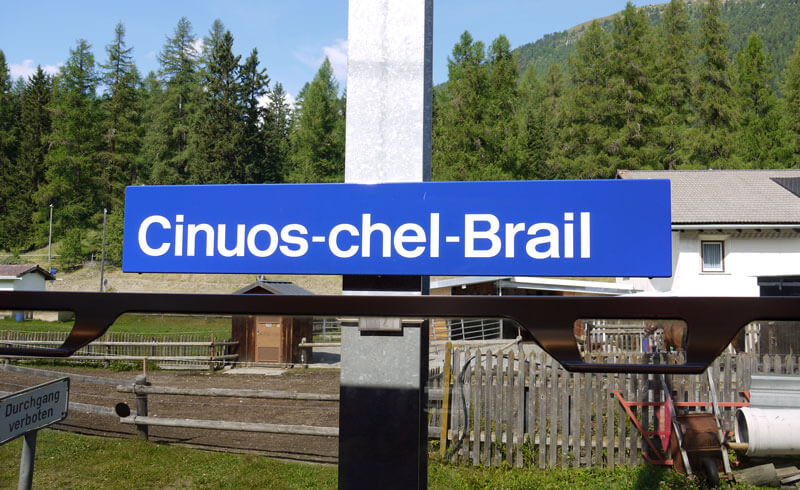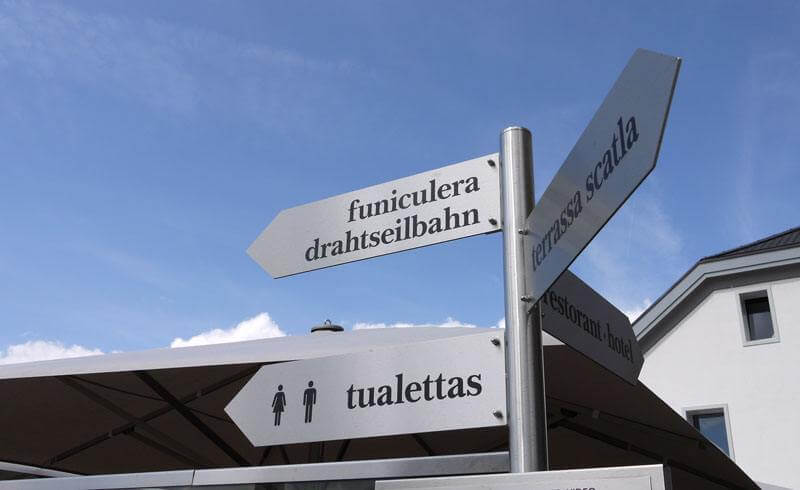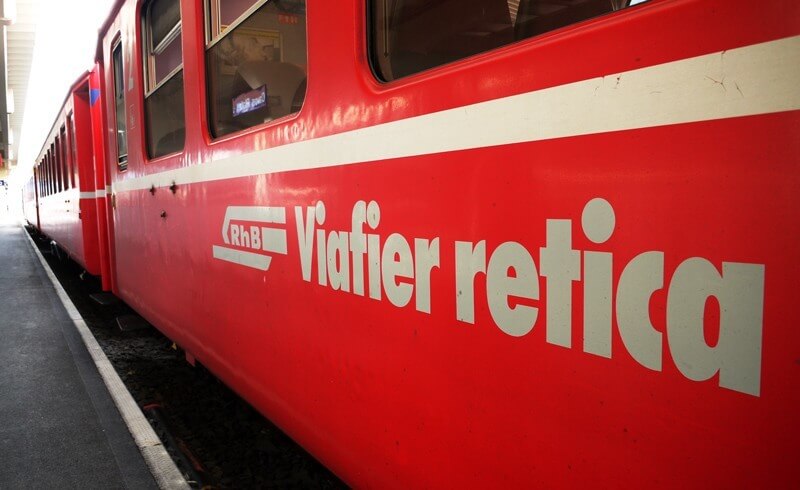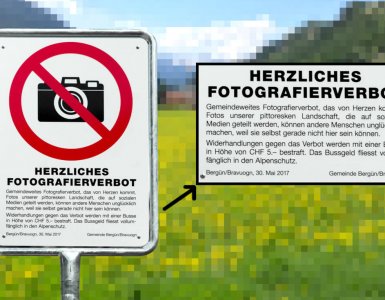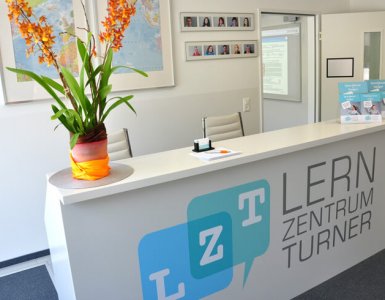In Switzerland, the languages that are frequently heard are Swiss German, French and Italian.
Grisons, or Graubünden in German, happens to be the only officially sanctioned, trilingual state in which the Romansh language holds the official status. (Although close to 75 percent of the canton's inhabitants also speak Swiss German.)
While Graubünden is the largest canton in Switzerland, it is by far not the most populous: It has just under 200'000 people, compared to Zürich's 1.47 million. This canton bordering Austria, Italy and Lichtenstein offers lots of variety in the form of exotic mountains, breath-taking river valleys, forests and Switzerland's only national park.
The Romansh language comes in seven dialects.
If the natural beauty was not enough, the official language Romansh is spoken in different dialects. Romansh is one of the Romance languages. At times, it can be attributed to being a corrupted version of Latin, the language spoken widely during the Roman Empire.
Though there are about 30'000 people who still speak Romansh today, not all of them speak the same language. This minority language in Switzerland is further divided into seven dialects, depending on the valley:
- Sursilvan - This Romansh dialect is spoken in the Surselva district of the Vorderrhein valley. As per recent estimates, close to 60 percent of the population of 21'347 speak Sursilvan as their principle language. The name of the district stems from the Romansh words sur and selva, which translate to "above the forest". This dialect is the most widely used among Romansh speakers.
- Sutsilvan - Well, you do not have to know Romansh to translate the meaning of this dialect. Derived from sut and selva, the name translates to "below the forest". Sutsilvan is spoken by a minority of a little over 1'000 people in the Hinterrhein valley.
- Surmiran - Julia and Albula are some of the popular rivers that form the valleys, and the inhabitants there speak a Romansh dialect which translates to "above the wall".
- Putèr – This is a variety of Romansh specific to the Upper Engadine valley - the valley of the Inn River. The Putèr dialect is spoken by about 30 percent of the population in this part of Graubünden. The name is derived from the local word put (porridge) and describes the place of porridge eaters.
- Vallader - Common in the Lower Engadine valley, Vallader happens to be the second most commonly spoken variety of Romansh. 79 percent of the valley's population, or about 6'500 people, speak Vallader. The name stems from the word val, meaning valley.
- Jauer - This dialect is quite similar to Vallader and yet has enough differences to command a separate status. Derived from the personal pronoun I, Jauer is preferred by 1'600 or so people residing in the municipality of Val Müstair.
- Tuatschin - It is one of the less distinguished dialects within the Romansh family and is spoken in the regions of Tujetsch and the Val Medel.
Attempts at standardizing Romansh have been unsuccessful.
Since the mid 19th century, many attempts have been made to create a unified language incorporating the essence of these different dialects. A first attempt was by Gion Antoni Bühler in 1867, which was followed by Leza Uffer in 1958. In both cases, the initiative to create a standard written language was ultimately unsuccessful.
In the last 80 years, Romansh has been a hit and miss story. Still, a majority has been opposing arguments for standardization. Here are some of the key developments of this language over the years:
- In 1938, Romansh was recognized as a national language of Switzerland.
- In 1982, a project was launched which promoted the convergence of the five major dialects of Romansh.
- That same year, under the name of Rumantsch Grischun, the rules and directives for this standardized language were established by the noted linguist Heinrich Schmid.
- In 1984, the new language was used to address the public of the Romansh speaking areas in Graubünden.
- In 1986, first signs of criticism against Rumantsch Grischun surfaced, launching an emotional and caustic debate which would go on for years.
- In 1996, following a public survey, the canton of Graubünden started to address Romansh speaking residents in Rumantsch Grischun. For discussions or regional announcements, regional varieties of the dialect continued to be used.
- In 1996, Romansh (Rumantsch Grischun) became an official language of Switzerland along with German, French and Italian.
- In 1999, regional varieties remained the basis of the Romansh schools while Rumantsch Grischun was introduced in middle and secondary schools.
- In 2001, the Graubünden government took various measures in order to establish Rumantsch Grischun as the official language. The referendum was in their favor.
- In 2003, the Graubünden government proposed new Romansh teaching materials be published only in Rumantsch Grischun by 2006, thereby abolishing all the regional varieties.
- In the school year of 2007/08, 23 municipalities introduced Rumantsch Grischun, followed by eleven in 2008/09, and six in 2009/10. However, the rest of the municipalities and entire regions of Engadin and Surselva opposed it, continuing to use regional dialects in schools.
- In 2011, a group of opponents founded the association Pro Idioms, demanding the Graubünden government overturn their 2003 decision. They launched many initiatives to return to the regional dialects.
- That same year, one municipality after another returned to teaching in their regional dialects.
- After few rounds of negotiations, in December 2011, the canton overturned its 2003 decision and decided to restore the earlier arrangement and finance school books to be published in regional varieties.
As it stands, Rumantsch Grischun remains an official and administrative language in the Swiss Confederation and in the canton of Graubünden.
Being the most comprehensive form of Romansh, Rumantsch Grischun consists of several Romansh words taken from all the dialects with standardized phonetic rules. This makes it easy for an outsider to learn the language.
"To live and let live" seems to be the compromise here, which begs the question: Should the government compromise individual cultures in the name of standardization? Or is the Grisons public making use of direct democracy in order to first and foremost retain their identities among valley peers?
And finally, here is a beautiful documentary about Romansh:
More information
- Demystifying Romansh, Switzerland's fourth language
- Piz Allegra app

